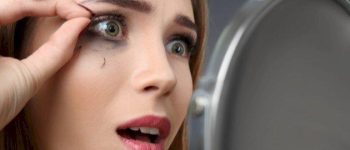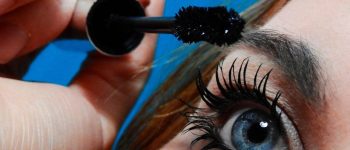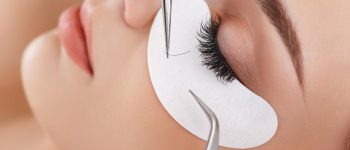We’ve all heard the saying that “history is written by the victors,” but what about those historical claims that have no basis in reality? In the age of social media, misinformation spreads like wildfire, and one such claim is making waves in the world of beauty. According to several viral images, a 19th-century prostitute named Gerda Puridle supposedly invented fake eyelashes to protect her eyes from bodily fluids. But is there any truth to this eyebrow-raising tale? Let’s separate fact from fiction and delve into the fascinating history of false eyelashes.
Unraveling the Myth
The claim that Gerda Puridle, a London prostitute from 1882, was the mastermind behind false eyelashes has been circulating on social media, causing quite a stir among beauty enthusiasts. However, upon closer examination, this widely shared claim turns out to be nothing more than an urban legend.
Accompanied by an image of French actress Alice Regnault, the falsely credited inventor, this meme has fueled the misconception. Additionally, a screenshot of a Google search for “elongated lashes 1882” appears to support the claim. But let’s not be fooled by appearances, as search results alone do not validate the veracity of the meme.
Separating Fact from Fiction
To set the record straight, false eyelashes were not invented by Gerda Puridle, nor were they worn for the purpose stated in the meme. The true origins of fake lashes trace back to the early 20th century in Canada. Anna Taylor, a Canadian inventor, secured a U.S. patent for “artificial eyelashes” that closely resemble the ones in use today. This patent, granted on June 6, 1911, marked a significant milestone in the evolution of false eyelashes.
Throughout history, various cultures have celebrated long, luscious eyelashes. Ancient Egyptians and Romans, for instance, employed kohl and ointments to darken their lashes, believing it enhanced their virtue and provided protection from the elements. Over time, these beauty practices evolved, leading to the creation of cosmetic mascara during the Victorian era.
The Power of Misconceptions
In the age of information overload, it’s crucial to approach viral claims with a critical mindset. Misinformation can spread rapidly, undermining the credibility of historical facts. By fact-checking and dispelling myths like the one surrounding false eyelashes, we can ensure that accurate information prevails.
So, the next time you adorn your eyes with those fluttery, voluminous lashes, remember that their roots lie not in the sordid tales of a 19th-century prostitute, but in the innovative spirit of inventors like Anna Taylor. Let’s celebrate the true history of false eyelashes and embrace the beauty they bring to our lives.
Our Ruling: False
Our fact-check investigation reveals that the claim of a 19th-century prostitute inventing false eyelashes is entirely false. Canadian inventor Anna Taylor holds the patent for artificial eyelashes, which resemble the ones we wear today. Let’s set the record straight and refute this misleading claim.
Our Fact-Check Sources:
- Nikki Lauria, Jan. 29, Facebook Post
- GalleriBalder, accessed Feb. 7, “Portraits (1885 – 1900)”
- Lively Lashes, Feb. 2, Facebook Post
- paperboy713, accessed Feb. 7, America’s Best Pics and Videos Post
- Marie Claire, Mar. 3, 2015, “The History of Women and Their Eyelashes”
- United States Patent Office, June 6, 1911, ANNA TAYLOR, OF OTTAWA, ONTARIO, CANADA. ARTIFICIAL EYELASH.”
- The New York Times Magazine, Jan. 18, 2013, “Who Made Those False Eyelashes?”
Thank you for supporting our journalism. You can subscribe to our print edition, ad-free app, or electronic newspaper replica here.








